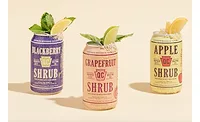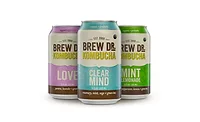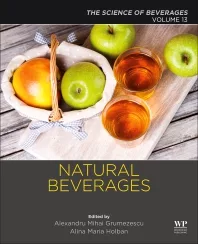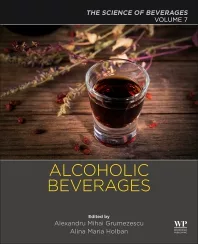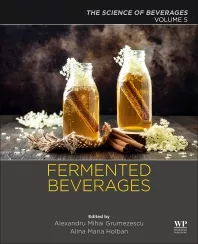Healthy beverages tap mainstream flavors
Beverage-makers explore exotic, indulgent taste profiles
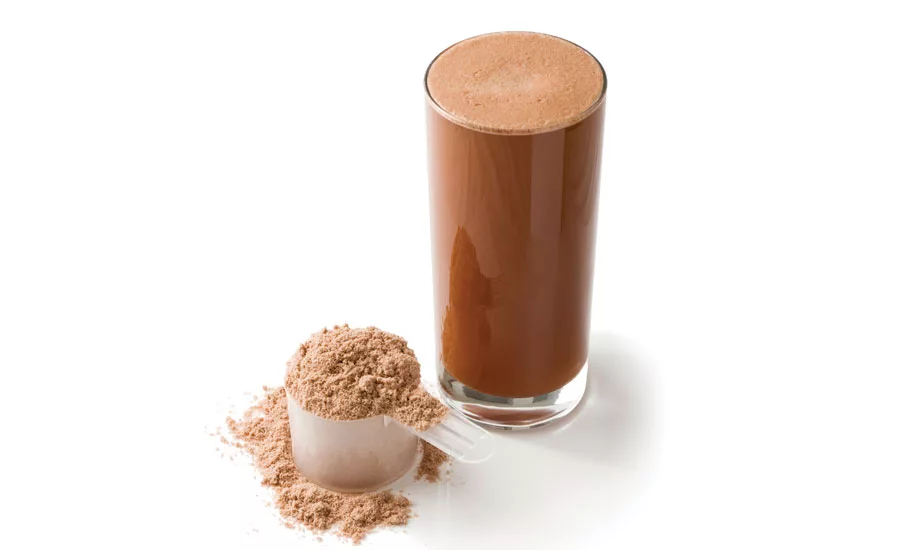
Many newly developed beverages in today’s market have realized the benefits of hybrid formulations. Whether it’s a ready-to-drink (RTD) juice with energy ingredients, a sparkling water fortified with fiber and probiotics, or RTD coffee featuring added protein, beverage blurring has changed the conventions of the beverage market. As these functional formulations become more mainstream, beverage-makers are tasked with ensuring that the flavor profiles offer appeal beyond the niche markets in which they were founded.
“The trend toward better-for-you-beverages/health and wellness, including reduced sugar products has matured greatly over the last few years,” says Dale Streit, director of flavor development for California Custom Fruits & Flavors (CCFF), Irwindale, Calif. “Formulators have made improvements in taste when working with functional ingredients and sucrose reduction. A lot of effort and resources have gone into improving sweetness enhancers, flavor potentiators, modifiers, blockers and maskers.
“The core flavors are also being optimized to perform better when faced with challenges,” he continues. “When these health-and-wellness products were more niche items, there was a trade-off between taste and health benefits. As they become more mainstream, more [research and development] (R&D) resources flow into these areas and we see them become more palatable to the mainstream consumer. There is a convergence as the mainstream moves toward the niche and the niche is absorbed into the mainstream.”
Nina Hughes-Likins, Global Marketing Director for Carol Stream, Ill.-based Prinova , also notes how functional beverage trends have impacted the flavors market. “With the emergence of functional beverages, plant=based proteins and a decrease in sugar, flavors have had to be masked to accommodate astringent as well as gritty, earthy notes from plant-based proteins while balancing out a decrease in sugar,” she says.
Among the beverage categories that have benefited from healthy beverage trends have been flavored waters, sparkling waters and light session alcohol beverages, she notes.
Megan Trent, marketing representative with Commerce, Calif.-based Gold Coast Ingredients (GCI), also highlights the prevalence of the sparkling water market as well as flavors that are supporting the healthy beverage alternative.
“This year we have seen a rise in all-natural, unsweetened sparkling waters,” she says. “Sparkling waters have impacted the quantity of custom citrus flavors and citrus combinations in the flavor market. Trending flavors include watermelon-lime, grapefruit, blood orange, cucumber-lemon, kefir lime, raspberry-lime and more citrus blends.”
However, some flavor suppliers have noticed a shift in requests as a result of better-for-you beverage trends.
“Health trends have pushed consumers away from more traditional sweet flavors and toward more sour, bitter and even spicy notes,” says Siddhi Thakkar, associate director of beverage business development for New York-based Virginia Dare. “Because these flavors are typically associated with a natural fruit or vegetable, consumers often perceive them as healthier. Flavors like tart cherry, ginger, turmeric, makrut lime, Earl Grey tea and cascara are seeing increasing utilization as a part of this movement. The trend is especially prevalent in kombucha and other probiotic/fermented beverages (water kefir, switchel, drinking vinegars), all of which remain strong.”
Yet, natural and healthy beverage trends can complicate the flavor process. Should beverage-makers want its flavor to align with major health-and-wellness benefits, additional evaluations and considerations must be met, experts note.
“With the macro trend of better-for-you, clean label, it’s putting a lot more restrictions on the ingredients that we can add to flavors,” says Angela Lantman, product development manager at Wauconda, Ill.-based Synergy Flavors. “Prop 65, non-GMO, organic are all things that are restricting the ingredients. Customers are still looking for that true to fruit flavor, or really nice, indulgent, creamy, caramel flavor, but with the limiting of ingredients, it can be difficult to hit the profile that customers are wanting.”
Lindsey Oostema, senior marketing specialist at Synergy Flavors, adds that the company can supply flavor solutions that support these trends, but that formulations are less likely to feature the “candy-like” flavor because of the specifications.
“It’s also going to depend on what the better-for-you beverage is and what the customer wants to call out, whether it’s non-GMO or organic flavor, we have to look at will we have the capability of making that,” she says.
Blake Wester, senior applications scientist of beverages for Downers Grove, Ill.-based Flavorchem Corp., also notes the importance of educating brand owners about taste and formulation considerations when incorporating natural or organic flavors.
“Managing the expectations of the customer is key,” he says. “Many potential customers have come in with a formulation that worked amazingly well in their kitchen but would have been challenging to scale up to full production. We work very hard to create a product that is as close as possible to what the customer wants but is still practical for a co-packer. That’s where the experience, skill and creativity come in.”
When wanting flavors that support health-and-wellness trends, terms like clean label and the variances it conveys across consumer groups can be a challenge. Because of this, some flavor suppliers like Flavorchem Corp. have defined what clean label means as part of the company’s portfolio.
“Our innovation team is always proactive by offering flavors consumers demand such as natural and organic which fall under clean labels,” says Ed McIntosh, marketing manager at Flavorchem. “Although ‘clean label’ has no clear definition, we believe, based on our research at present, it falls under the following categories: no artificial ingredients, no synthetic chemicals, propylene glycol (PG) free, caramel color free, Prop 65 free, natural/natural WONF, Non-GMO Project Verified and organic compliant/certified.”
Global implications
As consumers expand their cultural education, food and beverage formulations could be among the markets influenced by markets outside the United States. According to statistics portal Statista and its “Tourism Worldwide” report, international tourist arrivals were nearly 1.2 billion in 2015. This is up from 528 million in 2005. Additionally, Statista is forecasting figures to reach 1.8 billion by 2030.
In Chicago-based Mintel’s “2018 US Flavor Trends” report, the market research firm highlights how Middle Eastern ingredients are being used in diverse ways across the foodservice channel. As part of its Modern Mediterranean trend, Mintel notes that mint has seen its usage increase 48 percent as a non-alcohol beverage ingredient as well as 23 percent as an alcohol beverage ingredient from the fourth quarter of 2015 to the fourth quarter of 2017.
GCI’s Trent notes that flavors like mint benefit from their “sensation” implications. “Alcoholic beverages oftentimes include ‘sensation flavors’ like fresh mint flavor for a refreshing coolness effect and various chili pepper flavors for a kick of heat,” she says.
Although alcohol beverages have culled influence from exotic flavors, Virginia Dare’s Thakkar explains that consumers desire to try new flavors expand beyond imbibing occasions.
“Exotic and other non-traditional flavors have long been popular on cocktail menus at bars and restaurants, but for a flurry of reasons — be they social media, pop culture, increasing cultural diversity, and more — consumers are seeking new and exciting beverage experiences even if alcohol is not involved,” he says. “As a result, non-alcoholic beverages are becoming more unique and higher quality, as consumers who choose not to drink demand a wider array of tasty options beyond conventional soft drinks.”
Among exotic flavors, suppliers note that formulators have a myriad of solutions that can be utilized across various categories within the beverage market.
“Berry type flavors, ginger, citrus and mango have always been popular in exotic/non-traditional type beverages,” CCF&F’s Streit explains. “Ginger, in particular, can easily straddle the divide, having a long history in the mainstream beverage category in addition to being very popular in elixirs, cold-pressed juices, kombucha, etc. The level of ginger in newer health-oriented beverages is often higher than what older consumers have experienced. Look for levels of ginger to increase overall in all beverage categories in the years ahead.”
Prinova’s Hughes-Likins highlights that the use of exotic flavors has benefited vanguard beverage categories.
“Juices, flavored waters, sparkling waters and teas all have emerged with the use of non-traditional flavors and utilizing flavor blends and exotic flavors,” she says. “Botanical flavors are on trend, ranging from floral to turmeric, chili or ginger-based flavors.”
However, flavor suppliers also stress that coupling familiar flavors with exotic ones can be a vital first step when introducing non-traditional tastes to the mainstream consumer.
“Going back to the experiential desire, a lot of people are interested in trying something that they haven’t before,” Synergy’s Oostema says. “We’ve touched on this probably a year ago but consumers want to feel comfortable with what they are grabbing so instead of just reaching for a lemongrass flavored tea, they were going for a honey lemongrass or something that grounds it in familiarity and then something that pushes them outside of the bounds. If they like that, then they might feel comfortable going with a straight lemongrass beverage that also applies for lychee or yuzu or kind of all of those Asian fruit from around countries.”
Yet, non-traditional flavors expand beyond healthy beverage solutions. Flavors suppliers are seeing beverage-makers expand beyond traditional flavors for indulgent offerings as well.
“The beverage market is seeing an influx of novel indulgent flavors like salted caramel and maple and birch syrup that are exciting alternatives to traditional indulgent flavors like chocolate and vanilla,” Virginia Dare’s Thakkar says. “Whether in a drinkable yogurt or a flavored coffee beverage, these flavors are not typically found in beverages and present consumers with the opportunity to try something new, which they love.”
GCI’s Trent highlights how demand for indulgent options has remained consistent, but also is seeing more adventurous flavor combinations.
“Flavor trends for indulgent flavors have remained steady since 2017,” she says. “Trending flavors include vanilla, rich chocolate flavors, creamy coffee flavors (with vanilla, chocolate, caramel, or cinnamon), snickerdoodle, chocolate mint, chocolate nut (peanut, almond, hazelnut), s’mores, and kid’s cereal flavors. In addition, beverage companies continue to find new ways to innovate using (salted) caramel flavor. In recent months, horchata flavor has been making a comeback. We’ve noticed a trend of horchata-flavored matcha lattes and coffee beverages.”
Synergy’s Oostema notes that modern indulgent beverage creations are not just about the flavor profile, but the experience they deliver to consumers.
“What we’re keeping track internally is how to make applications to bring that experience to the consumers so that we can make our customers’ customers realize that they want to try something because of x, y and z and the flavor that’s within it is just as important but maybe not the reason that they grabbed it off the shelf,” she says. “We’re very cognizant of not taking away from the experience but still complementing the desire for it.”
Looking for a reprint of this article?
From high-res PDFs to custom plaques, order your copy today!




